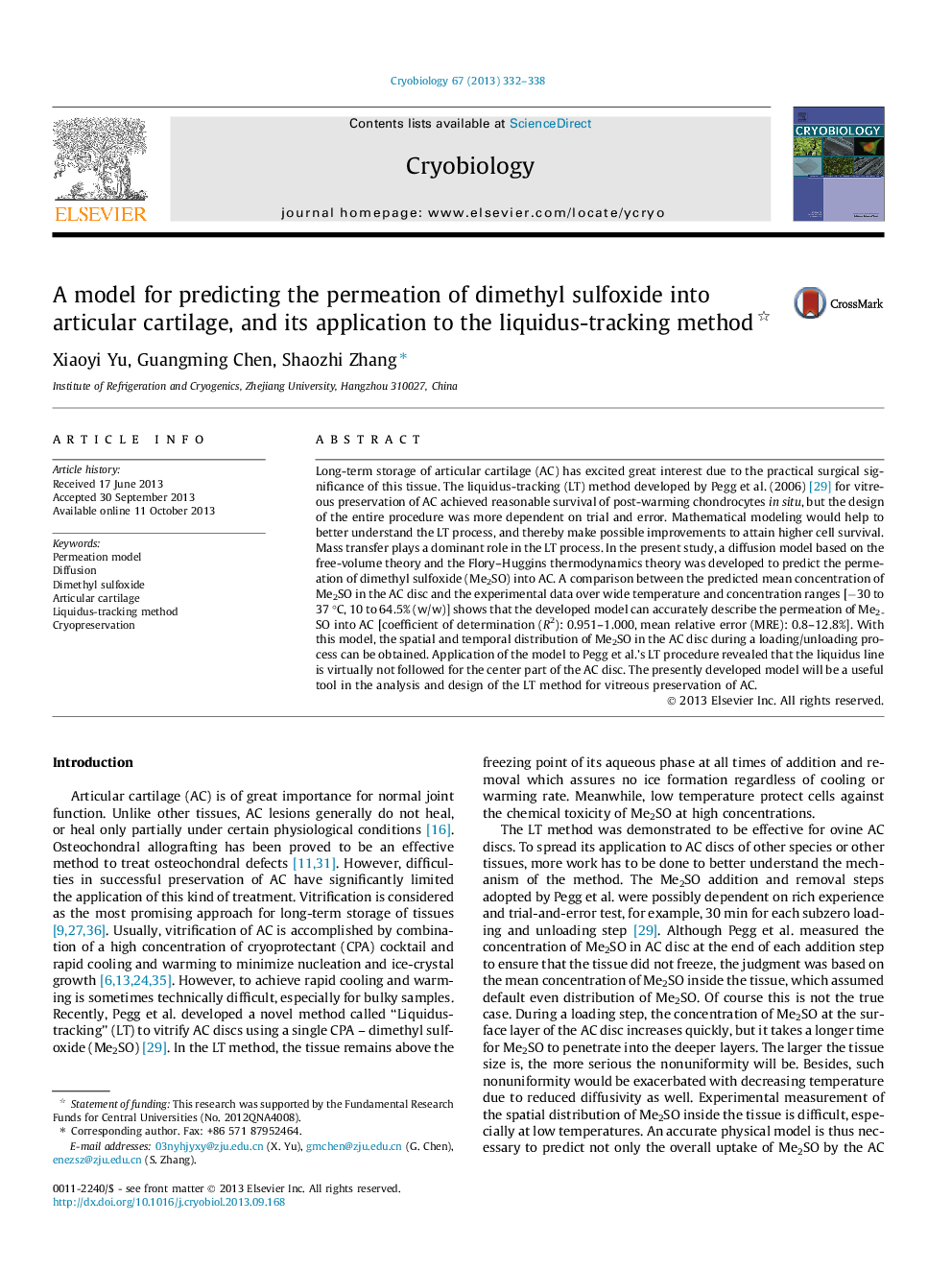| کد مقاله | کد نشریه | سال انتشار | مقاله انگلیسی | نسخه تمام متن |
|---|---|---|---|---|
| 10928389 | 1092903 | 2013 | 7 صفحه PDF | دانلود رایگان |
عنوان انگلیسی مقاله ISI
A model for predicting the permeation of dimethyl sulfoxide into articular cartilage, and its application to the liquidus-tracking method
ترجمه فارسی عنوان
یک مدل پیش بینی نفوذ دی متیل سولفوکسید به غضروف مفصلی و کاربرد آن در روش ردیابی مایع
دانلود مقاله + سفارش ترجمه
دانلود مقاله ISI انگلیسی
رایگان برای ایرانیان
کلمات کلیدی
موضوعات مرتبط
علوم زیستی و بیوفناوری
علوم کشاورزی و بیولوژیک
علوم کشاورزی و بیولوژیک (عمومی)
چکیده انگلیسی
Long-term storage of articular cartilage (AC) has excited great interest due to the practical surgical significance of this tissue. The liquidus-tracking (LT) method developed by Pegg et al. (2006) [29] for vitreous preservation of AC achieved reasonable survival of post-warming chondrocytes in situ, but the design of the entire procedure was more dependent on trial and error. Mathematical modeling would help to better understand the LT process, and thereby make possible improvements to attain higher cell survival. Mass transfer plays a dominant role in the LT process. In the present study, a diffusion model based on the free-volume theory and the Flory-Huggins thermodynamics theory was developed to predict the permeation of dimethyl sulfoxide (Me2SO) into AC. A comparison between the predicted mean concentration of Me2SO in the AC disc and the experimental data over wide temperature and concentration ranges [â30 to 37 °C, 10 to 64.5% (w/w)] shows that the developed model can accurately describe the permeation of Me2SO into AC [coefficient of determination (R2): 0.951-1.000, mean relative error (MRE): 0.8-12.8%]. With this model, the spatial and temporal distribution of Me2SO in the AC disc during a loading/unloading process can be obtained. Application of the model to Pegg et al.'s LT procedure revealed that the liquidus line is virtually not followed for the center part of the AC disc. The presently developed model will be a useful tool in the analysis and design of the LT method for vitreous preservation of AC.
ناشر
Database: Elsevier - ScienceDirect (ساینس دایرکت)
Journal: Cryobiology - Volume 67, Issue 3, December 2013, Pages 332-338
Journal: Cryobiology - Volume 67, Issue 3, December 2013, Pages 332-338
نویسندگان
Xiaoyi Yu, Guangming Chen, Shaozhi Zhang,
